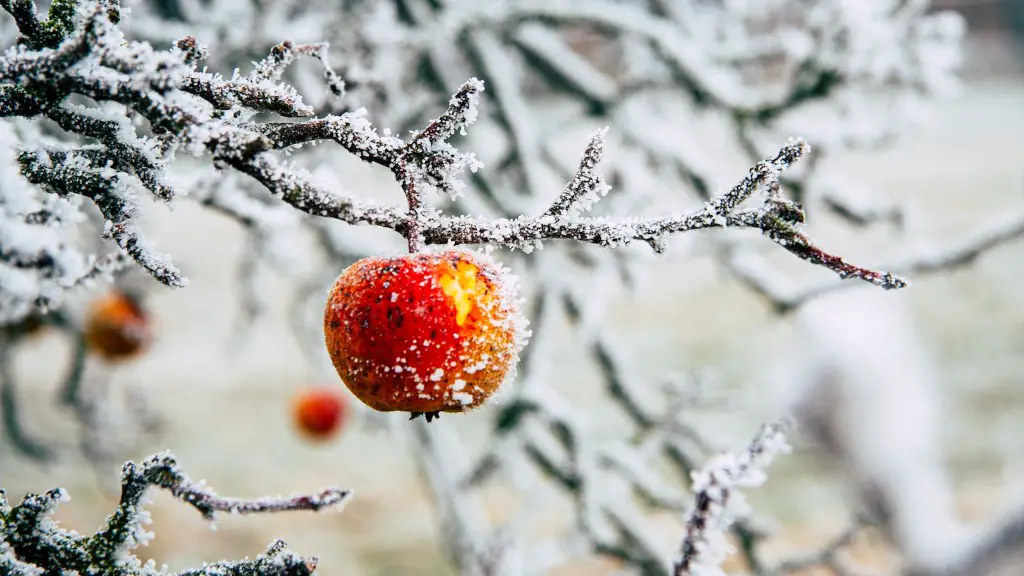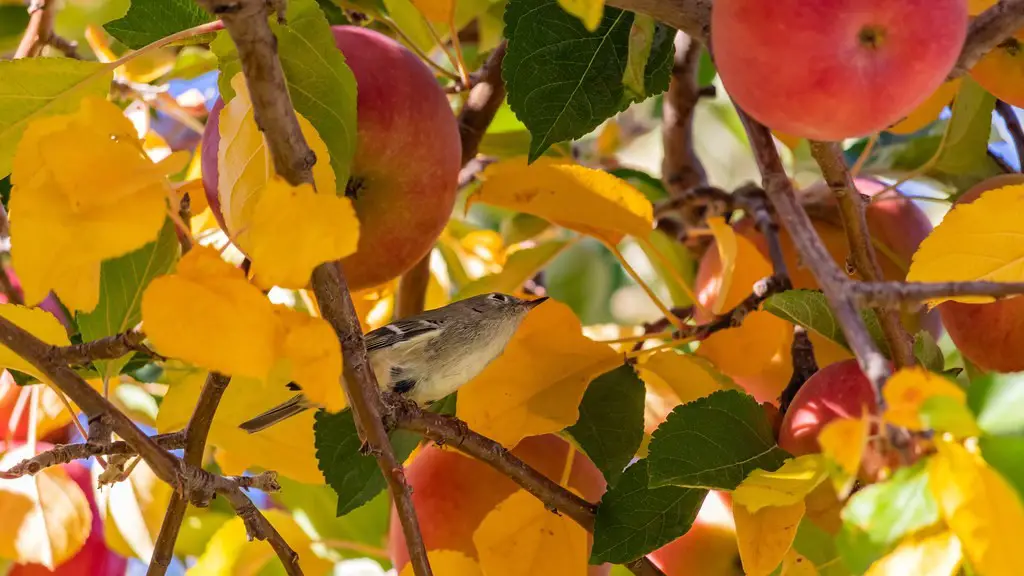Apples are one of the most nutritious and versatile fruits. They can be eaten raw, cooked, or used for baking and preserving. In this guide, we’ll look at how to use apples from a tree. We’ll discuss the best way to harvest apples, the steps on how to choose apples, and the best methods of preserving and storing apples.
Harvesting apples from a tree can be a fun and rewarding process. Start by selecting a healthy apple tree with open blooms, vigor, and dark green leaves. Shake the branches vigorously and see if any apples fall off. Then pick the apples by hand. Choose firm apples with at least some red color, and avoid rotten or over-ripe apples. Once you have picked the apples, store them in a cool, dark place until you’re ready to use them.
The next step is to select your apples. Apples come in a variety of colors, shapes, and sizes. Each variety has its own characteristics, flavor, texture, and nutritional value. Consider the recipe you are making and select apples that are suitable. If you are making a pie, choose apples that are sweet and juicy. If you are making a cake, choose apples that are tart and firm.
Once your apples are harvested and selected, it’s time to start using them. The most common way to use apples is to make applesauce, cider, pies, or cake. Apples can also be used to make jam, jelly, chutney, or stew. If you are feeling adventurous, you can make your own vinegar, brandy or cider.
When using apples for baking and preserving, there are a few steps to keep in mind. Start by washing the apples and removing any blemishes. Then prepare the apples for use by peeling, coring, and slicing them. If you are baking with apples, lightly sprinkle cinnamon, nutmeg, and sugar on them before baking. If you are preserving apples, use a sugar syrup and lemon juice.
Finally, it’s time to store your apples. Apples can be stored in airtight containers in the refrigerator for several weeks. For longer storage, freeze the apples in resealable bags. If you’re making applesauce, jam, jelly, chutney, or stew, preserve the fruits in sterilized jars. These products can be stored in a cool, dark place for up to a year.
Preparation before Cooking
Before cooking with apples from a tree, there are a few steps that need to be taken. First, it is important to wash the apples with a damp cloth or scrub brush to remove any dirt and debris that may have collected on them. It is also important to remove any blemishes that may be on the apple, such as rotten or mushy spots. Once these steps are taken, the apples can be peeled, cored, and sliced as per the recipe.
When slicing, it is important to take note that different apple sizes will require different slicing techniques. For example, small apples, such as Granny Smith apples, can be cut into wedges or rings. Larger apples, such as Honeycrisps, are best cut into thin slices. Taking the time to prepare apples properly will ensure that they cook properly and maintain their texture.
Before cooking with apples, there are also a few additional steps that should be taken. For best results, it is important to toss the sliced apples with a bit of sugar, as this will help keep their texture intact while they’re cooking. If the recipe calls for it, other spices, such as cinnamon or nutmeg, can be added to the apples as well. Lastly, it is important to note that apples can turn brown if exposed to air for too long. Consider adding lemon juice to the apples to help them maintain their color.
Cooking Methods
When cooking with apples from a tree, there are several options available. The type of recipe and how much time is available will determine the best cooking method for the apples. For example, for pies or tarts, baking is the best option. On the other hand, for applesauce, simmering the apple slices on the stove until soft is the most suitable cooking method.
When baking with apples, it is important to make sure the apples are evenly coated with sugar, cinnamon, and other spices. When simmering apples, they should be cooked on low heat in a lightweight saucepan until they reach the desired consistency. When making applesauce, make sure to stir the apples often to ensure that they do not burn. Lastly, when roasting apples, ensure that the oven is preheated to the correct temperature and that the apples are placed on a parchment-lined baking sheet.
The cooking time for apples will depend on the type of recipe and the cooking method selected. For example, when baking a pie or tart, the apples should be in the oven for at least 30 minutes, or until golden brown. On the other hand, when simmering applesauce, the apples should cook for at least 15 minutes, or until they reach a soft, creamy texture.
Storing and Freezing Apples
Once the apples are cooked, it is important to store or freeze them properly. Apples that are intended for immediate use can be stored in an airtight container in the refrigerator for several weeks. For longer storage, apples can be placed in resealable bags and frozen. When freezing apples, make sure to label them with the date and desired use.
When freezing apples, it is important to note that they may discolor slightly when thawed. Therefore, it is best to freeze them in the form of pies, applesauce, or crumble. To help retain their color and texture, consider adding a bit of lemon juice before freezing to help slow down the oxidation process.
When freezing pie, applesauce, or crumble, it is important to follow the specific recipe instructions. For best results, the pies and applesauce should be cooled completely before freezing, while the crumble should be tightly wrapped in plastic wrap prior to freezing. When thawing pies and crumbles, place them in the refrigerator overnight and reheat in the oven prior to serving.
Preserving Apples
Preserving apples is another great way to enjoy the fresh taste of autumn apples throughout the year. To preserve apples, it is important to first prepare a sugar syrup. This syrup should be heated and combined with lemon juice, then set aside to cool. Once cooled, the mixture can be poured over sliced apples, or used to fill mason jars and canned apples for long-term storage.
When preserving apples, it is important to select the apples that are best for the intended use. For example, for pies or applesauce, it is best to use apples that are sweet and juicy, such as Granny Smiths or Honeycrisps. For preserves, it is best to use tart, firm apples such as tart green apples or Braeburns.
When preserving apples, make sure to fill the mason jars with even layer of apples. Leave at least an inch of headspace at the top of the jar to allow for expansion of the liquid. Once the jars are full, pour the cooled syrup over the apples, leaving at least a half-inch of headspace. Screw on the lids and process the jars in a canning pot according to the instructions.
Once the jars are processed and sealed, store them in a cool, dark place. The preserved apples should last up to one year if stored properly. When ready to use, remove the jars and allow them to thaw in the refrigerator before opening. Enjoy the sweet applesauce, pies, and preserves year-round.


